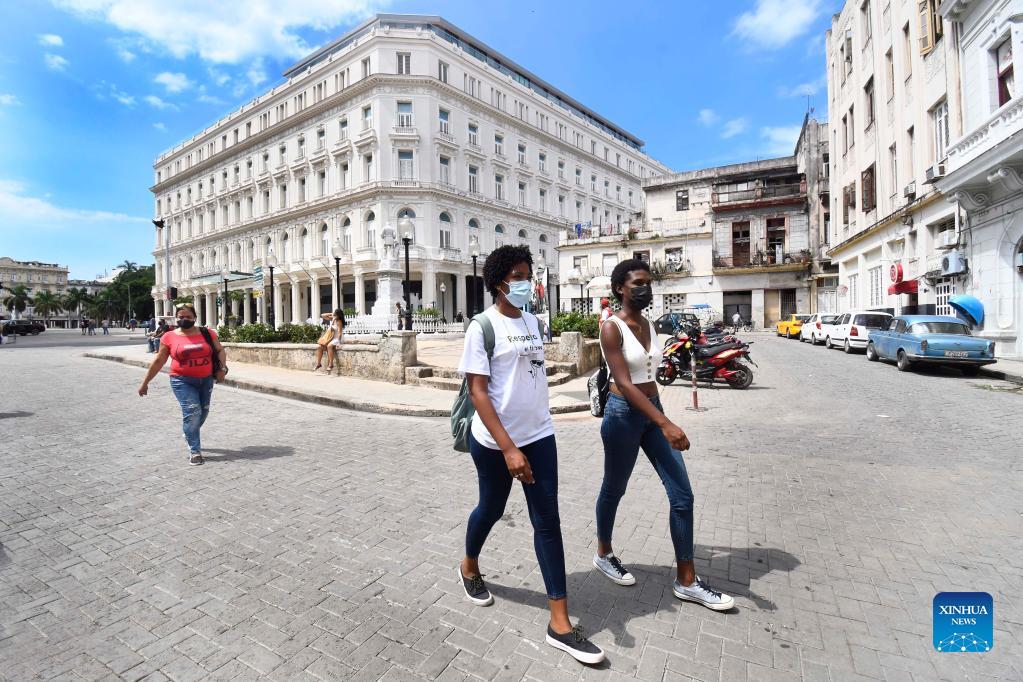John Paul Tasker -
Conservative leadership contender Pierre Poilievre has tabled a bill in the House of Commons that, if passed, would prohibit the federal government from imposing vaccine mandates on federal workers and the travelling public.
Poilievre, who has been a vocal opponent of mandates since the convoy of protesters against vaccine mandates rolled into Ottawa earlier this year, said he's tabling this legislation now "to give Canadians back control of their lives."
"I have met countless people and heard endless tragic stories of people separated from family members by their inability to get on an airplane or people languishing without a paycheque, despite having a spotless track record serving their employer over many years," Poilievre said while introducing the legislation Thursday.
"These mandates have become nothing more than a cruel attempt to demonize a small minority. They are absolutely unnecessary and without any scientific basis."
Most Canadians fully vaccinated
The existing mandates affect do only a fraction of the population — the vast majority of Canadians have already had at least two doses of a COVID-19 vaccine. According to the latest figures, more than 86 per cent of all Canadians over the age of five are considered "fully vaccinated."
While the text of Poilievre's bill, C-278, explicitly mentions only COVID-19-related vaccine mandates, his social media accounts promoted the legislation as a way to "scrap all vaccine mandates and ban any and all future vaccine mandates" to give people their "medical freedom."
There is nothing in the legislation that would tie the hands of a future government that wants to impose another vaccine mandate down the line.
The bill follows Poilievre's past overtures to a small but politically organized group of voters who vehemently oppose all COVID-19 related restrictions, most of which have already been dismantled by provincial and territorial governments.
Former Quebec premier Jean Charest, another leadership contender challenging Poilievre for the top job, said Poilievre's vaccine mandate legislation sends an ominous signal.
"It's not clear whether Poilievre will procure vaccines for Canadians in a future pandemic," Charest said in a social media post.
"The only way to stop this is with a serious leader who won't risk the health and well-being of millions of Canadians for his own power," he said while urging Canadians to take out a Conservative party membership before Friday's deadline and vote in this leadership election.
Federal vaccine mandates remain in place a year on
Late last summer, the Liberal government introduced an order that demands all federal public servants, workers in federally regulated industries and the transportation sector and members of the travelling public get their COVID-19 shots if they want to go to work, fly on a plane or travel by interprovincial train.
Nearly a year later, the mandate remains in place.
Dr. Theresa Tam, Canada's chief public health officer, said in March that the government was considering a shift from "an emphasis on requirements to recommendations," while also promising a "review" of all existing mandates.
At the time, Tam said all federal vaccine mandates should be re-examined because the science tells us the primary series of the COVID-19 vaccine — the first two doses — offers very little protection against an Omicron infection.
Asked about that review last month, Tam said it is "still ongoing" and deferred to the government, which has held firm on its two-dose mandate.
Tories demand Ottawa end all COVID-19 travel measures
With the support of the other opposition parties, the vast majority of Liberal MPs voted down a Conservative motion this week that called for the government to revert to pre-pandemic rules for travel by dumping vaccine mandates, random COVID-19 tests and the requirement that international travellers answer pandemic-related questions on the ArriveCAN app.
Poilievre wasn't in the chamber for a vote on the motion. That prompted criticism from Brampton, Ont., Mayor Patrick Brown, another leadership rival, who said Poilievre's opposition to vaccine mandates was just for show.
"Pierre Poilievre claims to oppose vaccine mandates. But when the Conservative Party of Canada put forward a motion to end all travel mandates ... Pierre didn't support it," Brown said in a social media post.
Poilievre said he intended to vote for the Conservative motion but he experienced "a technical problem" when joining the parliamentary debate remotely from Thunder Bay, Ont.
Poilievre said Thursday it was time for the government to move on from pandemic measures that have become a feature of Canadian life during this health crisis.
"We are an outlier here in Canada today. Most countries have removed mandates for travel, including the U.K., Germany, Italy, Thailand, Poland, Argentina, Chile and many others. All provinces have now removed vaccine mandates. The five big banks have done likewise, and public sector unions have even begun legal actions to remove these discriminatory mandates," Poilievre said.
Poilievre's legislation, a private member's bill, isn't likely to pass through a Commons controlled by the Liberal-NDP alliance.
These types of bills also take months, and sometimes years, to pass through all the legislative phases in both houses of Parliament, which means the federal COVID-19 vaccine mandates may already be gone before this bill ever gets to a vote.








